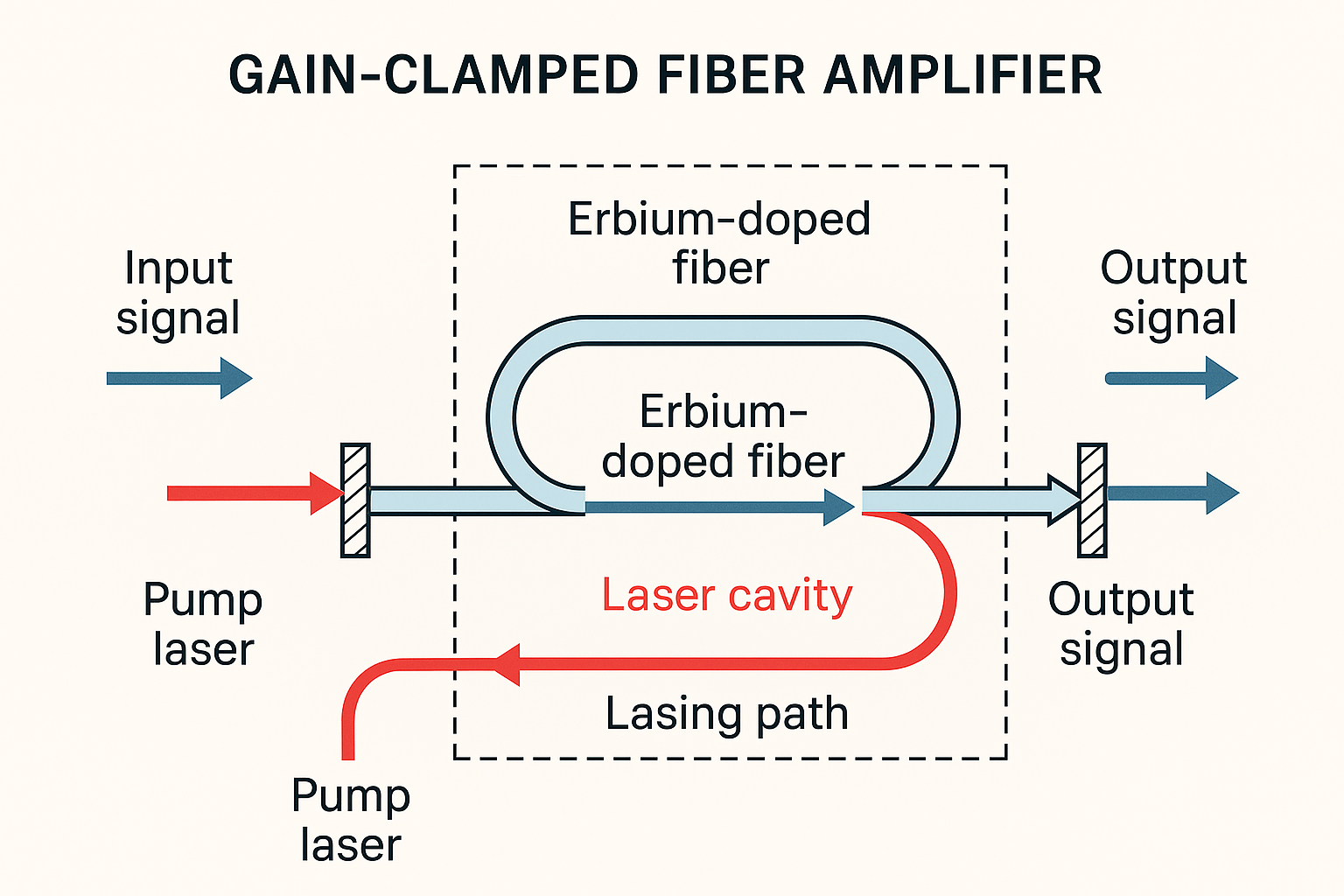Gain clamping is an critical mechanism on laser physics and optical amplifier technology. It gives strict control over optical gain through a elegant self-regulating process. This sophisticated technique sets an firm limit on amplification levels—they can’t exceed a certain point no matter how much pump power increases. It ensures remarkable stability and precision in optical systems.
At its core, gain clamping happens when optical gain in an amplifier or laser ties firmly to an precisely defined value. This usually comes from laser action within the system. Conventional amplifiers keep raising gain as pump power increases—until a saturation. But gain-clamped systems hold an strict ceiling on amplification, no matter how much extra pump power you add.
The mechanism rests on a fundamental principle. Once gain hits the threshold equal to optical resonator losses, any extra gain would make laser power rise exponentially. That’s incompatible with steady-state operation. This self-regulating feedback keeps gain precisely clamped at the resonator loss value.
It’s important to tell gain clamping apart from gain saturation—an even more common phenomenon. Both limit amplifier gain, but they work through totally different mechanisms. Gain saturation happens gradually as input signal power goes up. It makes gain decrease smoothly as the medium’s energy storage gets used up.
In contrast, gain clamping sets an sharp, precise threshold—you can’t exceed it, no matter the pump power. This precision makes gain clamping much more accurate for stabilizing amplification levels. It’s better than relying on saturation effects at high pump powers.

In lasers and optical amplifiers, gain clamping doesn’t just restrict optical gain—it also limits excitation density (upper-state population) on the gain medium. This limitation affects stored energy and various secondary effects in the system in important ways.
By clamping excitation density, this mechanism controls several phenomena that depend on upper-state population. That includes quenching processes and excited-state absorption. This comprehensive control makes gain clamping especially valuable for applications that need high stability and predictable performance.
Gain clamping is especially beneficial in fiber amplifiers—where stable gain is critical. A common way to implement it is adding fiber Bragg gratings (FBGs) to the amplifier design. This creates an laser cavity that works at wavelengths outside the signal band.
This setup lets lasing happen at specific wavelengths—separate from the signal. It clamps the gain effectively without messing with the amplified signal. When done right, this approach makes sure fluctuations in pump or signal power barely affect the amplifier’s output characteristics.
One of the biggest applications of gain clamping is in wavelength division multiplexed (WDM) optical networks. In these systems, adding or removing channels (wavelengths) can cause big power fluctuations in the remaining channels—if amplifier gain isn’t properly stabilized.
Gain-clamped amplifiers give crucial stability in these dynamic environments. They keep gain levels consistent no matter how many channels fluctuate. This capability stops power surges that could damage components or ruin signal quality in complex optical networks.
While gain clamping gives excellent steady-state gain stability, it’s important to note: transient phenomena can still happen during rapid changes in operating conditions. Fast fluctuations in pump or signal input power might temporarily disrupt the clamping mechanism. This leads to brief power spikes before stability comes back.
These transient effects are especially relevant in systems with rapid channel reconfiguration—like optical burst switched networks. Understanding and managing these dynamic behaviors is key for designing robust optical communication systems.
Recent advances in gain clamping technology have focused on improving response time and cutting power penalties. Researchers have made sophisticated designs using composite fiber Bragg gratings and ring cavity configurations. These offer better gain stability while minimizing the drop in available gain.
Novel approaches using advanced materials and optimized feedback mechanisms keep improving the performance of gain-clamped amplifiers. These developments are expanding where gain clamping technology can be used in next-generation optical systems.
Gain clamping is an powerful technique for getting precise control over optical amplification. By setting an firm ceiling on gain—directly tied to resonator loss—this mechanism gives stability and predictability that beats what conventional gain saturation can do.
In real-world applications—especially fiber amplifiers and WDM networks—gain clamping offers big benefits. It maintains signal integrity and prevents component damage. Even with limitations related to transient response, the technology keeps evolving. This cements its importance in modern optical systems.
Contact: Jason
Phone: +8613337332946
E-mail: [email protected]
Add: Hangzhou City, Zhejiang Province, China